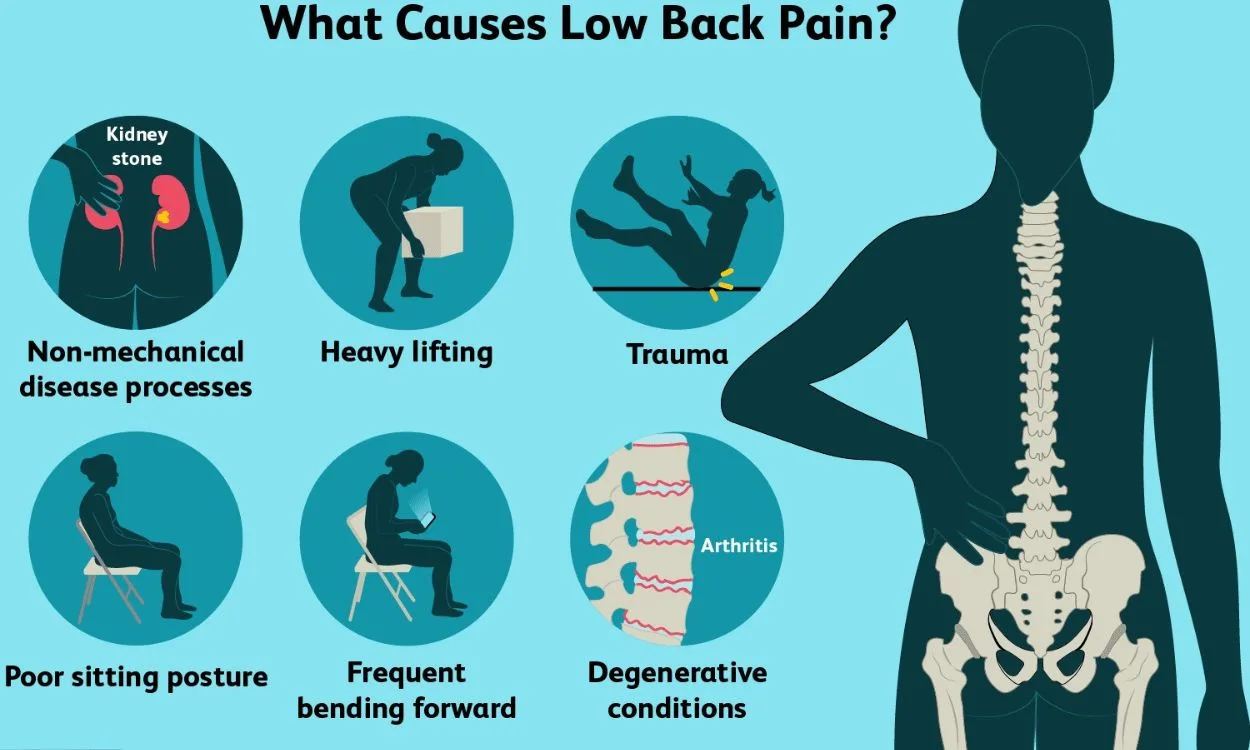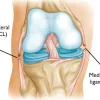What are the symptoms of lower back pain?
Lower back pain is a common ailment that affects a large number of people, especially those leading a sedentary lifestyle or engaging in activities that put strain on the back. It can range from mild discomfort to severe pain and can significantly impact a person’s quality of life.
Here are some of the common symptoms of lower back pain:
- Localized pain: The primary symptom of lower back pain is pain or discomfort in the lower region of the back. It can be a dull ache, a sharp stabbing pain, or a persistent soreness. The pain may worsen with movement, such as bending, lifting, or twisting.
- Radiating pain: In some cases, the pain may radiate from the lower back to the hips, buttocks, and down the legs. This is known as sciatica and is caused by compression or irritation of the sciatic nerve, which is the longest nerve in the body.
- Stiffness and decreased mobility: Lower back pain can lead to stiffness and reduced flexibility in the back. This can make it difficult to perform everyday activities like bending, standing, or sitting for long periods of time.
- Muscle spasms: The muscles in the lower back may go into spasms, causing sudden and intense pain. Muscle spasms can be triggered by injury, overuse, or muscle imbalances.
- Numbness and tingling: If the nerves in the lower back are affected, it can lead to sensations of numbness, tingling, or a pins-and-needles feeling in the back, buttocks, or legs.
- Weakness in the legs: In some cases, lower back pain can cause weakness in the muscles of the legs. This can affect balance and stability, making it difficult to walk or perform tasks that require strength in the legs.
- Pain with certain movements: Lower back pain may be aggravated by specific movements, such as lifting heavy objects, twisting the torso, or prolonged sitting or standing.
- Pain that worsens with rest: While lower back pain may be more noticeable during physical activity, it can also worsen with rest or inactivity. This can make it difficult to find a comfortable position for sleeping or resting.
It’s important to note that the symptoms of lower back pain can vary from person to person, and the severity and duration of the pain can also differ. If you’re experiencing persistent or severe lower back pain, it’s recommended to consult a healthcare professional for an accurate diagnosis and appropriate treatment.
Now that you have a better understanding of the symptoms of lower back pain, it’s essential to take proactive steps to manage and alleviate the pain. Fitpaa, a comprehensive health and fitness app, can help you achieve your health goals and address lower back pain through a personalized approach.
Fitpaa provides a range of features and services tailored to your specific needs, including a fitness planner, nutritionist, and doctor who work together to create a customized fitness plan called the Fitpaa Capsule. This all-in-one health and fitness plan includes a sustainable diet plan, a 360° workout plan, and a recovery plan.
By following your Fitpaa Capsule and utilizing the app’s precision diet tracker and smart workout trainer, you can track your progress, stay motivated, and make necessary adjustments to your lifestyle. The Fitpaa app also offers real-time guidance technology, habit-building techniques, and timely nudging to help you stay on track and achieve your health and fitness goals.
Don’t let lower back pain hold you back from living your best life. Download the Fitpaa app today and experience the joy of getting fit, healthy, and pain-free. With Fitpaa’s guaranteed results and lifetime validity, you can trust that your journey to a healthier back and overall well-being is in good hands.









